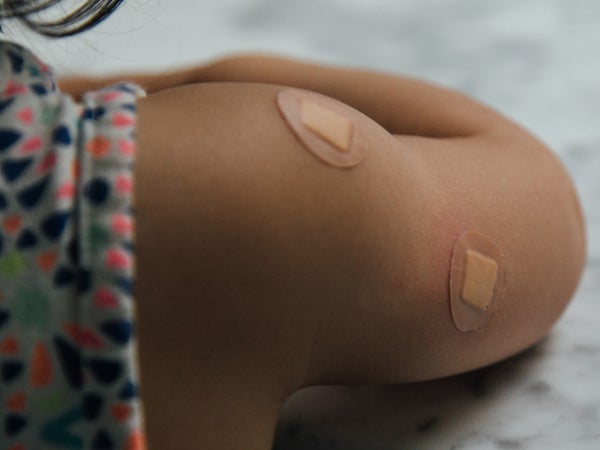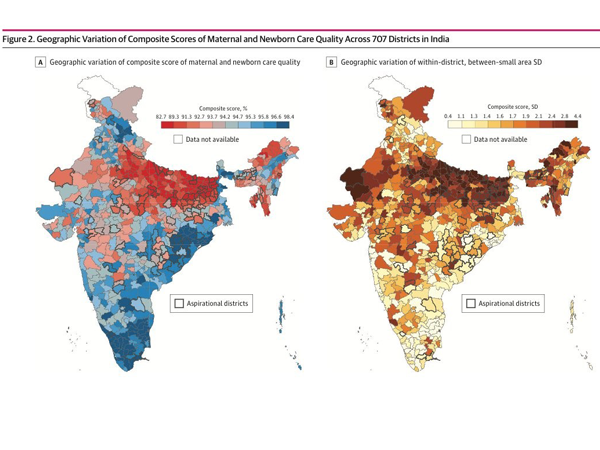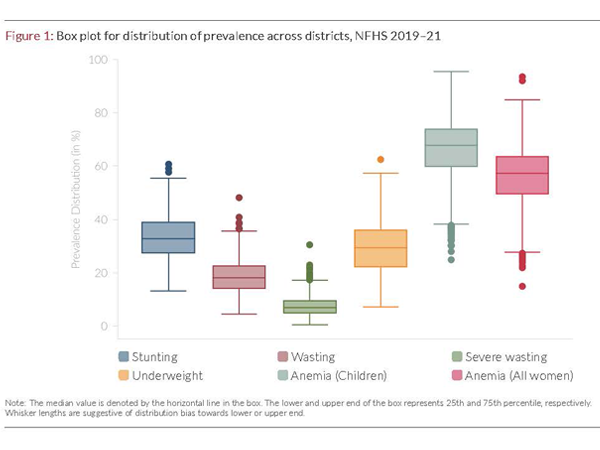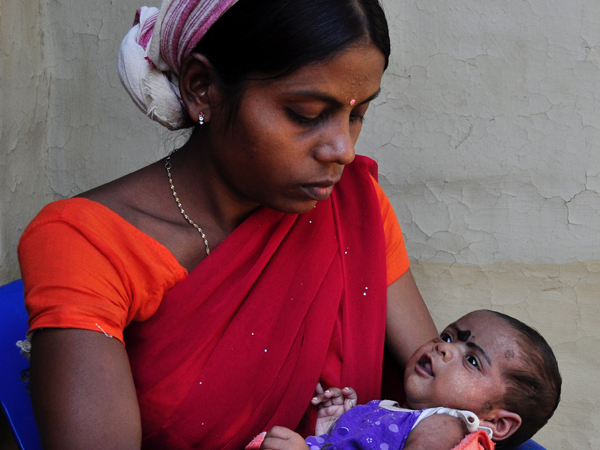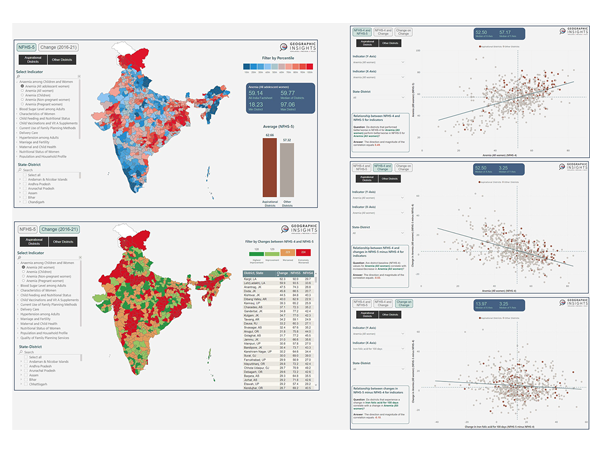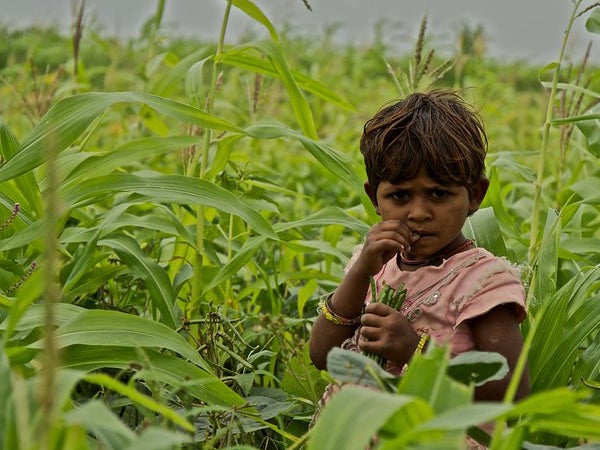Former Harvard postdoctoral fellows Adam Lippert, Dan Corsi, and Rockli Kim, along with faculty member S (Subu) V Subramanian, and their colleagues have published a study in Nicotine and Tobacco Research that is one of few studies to assess cumulative genetic contributions to nicotine use and cardiometabolic health during early mid-life alongside socioeconomic and lifestyle factors.
Harvard Chan School reports: “Study highlights inequalities in early childhood vaccination in India”
A study published in JAMA Open Network by Harvard Pop Center faculty member S (Subu) V Subramanian, PhD, visiting scientist Rockli Kim, and their colleagues reveals a pattern of vaccination rates among children (ages 12-23 months) in India; despite efforts to achieve increased vaccination rates nationally, the number of children in certain regions and states in India who did not receive routine vaccinations (first dose of the diphtheria-tetanus-pertussis (DTP) vaccine)…
India Policy Insights investigates variation in the quality of maternal and newborn care between smaller areas within districts in India
Researchers affiliated with the India Policy Insights initiative have published the findings of a cross-sectional study in JAMA Network Open that reports there being more variation in maternal and newborn care quality (measured by 11 individual components of care) in smaller, “within-district” geographic areas compared to the district- and state-level, suggesting that “policy around maternal and child health care needs to be designed more precisely to consider district mean and…
New policy brief series by India Policy Insights team delivers concise analysis of key performance indictors for five national programs sponsored by Indian government
The government of India has invested in programmes to help the states and districts achieve performance goals set to address everything from health issues (such as reducing anemia, stunting and low birth weight) to issues around gender inequity and women’s empowerment through education. But how can it be determined if India’s districts are achieving these goals? Now, a new policy brief series produced by India Policy Insight‘s team helps shed…
JAMA study findings call for more targeted interventions in LMICS for malnutrition and infections for children under age 2, as well as for pregnant women
An original investigation of 77 low- and middle-income countries (LMICs) published in JAMA Network found that 82% of under 5 child deaths occurred before age 2, with over half occurring in the neonatal period. Authors include faculty member S (Subu) V Subramanian, visiting scientist Rockli Kim, and their colleagues Omar Karlsson and Andreas Hasman. The study also spotlights diarrhea and pneumonia as two significant causes for child death over 2…
Honing in on small geographic areas within districts in India yields large differences
Estimating health indicators, such as birth weight and size, is typically calculated at the district level in India, a practice that fails to capture the inequalities that may exist between smaller geographic areas, such as villages. A team of researchers affiliated with the India Policy Insights project have published a study that takes a novel look at low birth weight (LBW) and low birth size (LBS) across these smaller geographical…
Better than average… study applies complex variance modelling to more accurately assess treatment effects of the Head Start program
When assessing the effectiveness of a large-scale, federally funded program such as Head Start—a program designed to better prepare children ages 3-5 from low-income families for school—it is limited to only look at the Average Treatment Effect given the “considerable systematic heterogeneity within population between individuals.” This study applies complex variance modelling, an extension of multilevel modelling, to capture the variance, as well as the mean, in order to shed…
First-ever dashboard displaying life expectancies on the U.S. Congressional District level
Despite persistent health disparities in the United States, health data on the Congressional District level continues to be meager. “As our nation transitions towards recovering from the COVID-19 pandemic and reducing health disparities, it is imperative for politically relevant public health data to be available in a clear and direct manner,” said Dr. S V Subramanian, Harvard Pop Center faculty member and one of the leading researchers at the Geographic…
India Policy Insights designated a “Key Initiative” for the Government of India
India Policy Insights (IPI), the flagship project of the Geographic Insights Lab at the Harvard Center for Population and Development Studies, has been designated as a Key Initiative of NITI Aayog (National Institution for Transforming India), the official policy design and innovation think tank for the Government for India. This partnership will allow NITI to strengthen its monitoring capacity by leveraging IPI’s online geo-visual data platform that synthesizes and visually…
Continue reading “India Policy Insights designated a “Key Initiative” for the Government of India”
Researchers call into question the accuracy of using stunting as a metric for measuring undernutrition among children in India
S V Subramanian and Rockli Kim, along with their colleague Omar Karlsson, have authored a timely commentary published in The Lancet Global Health in which they caution policy makers in India — who are currently reformulating India’s flagship nutrition program, POSHAN Abhiyaan — about utilizing the stunting metric to determine the effectiveness of interventions targeting child undernutrition. Since the height of a child is partially genetically determined by the height…
